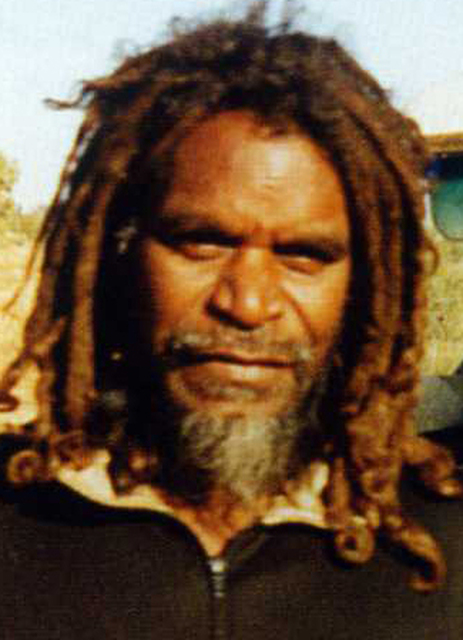WARLIMPIRRNGA TJAPALTJARRI
Untitled
WT0803207 (2008)
Acrylic on Belgian Linen
183 x 153cm | 72.05 x 60.24in
Papunya Tula Artists
ENQUIRE
Provenance
Papunya Tula Artists - Alice SpringsUtopia Arts - Sydney
Private Collection - Brisbane
Tjapaltjarri was born in the late 1950s, near Lake Mackay, east of where Kiwirrkurra is today. His family were Pintupi hunter-gatherers who lived a traditional nomadic way of life on the western side of the lake, and had never come into contact with Euro-Australian society. Tjapaltjarri's father died when he was a young boy, and his mother remarried shortly after. Tjapaltjarri himself married his cousin Yalti sometime around 1980. He served as the family's main provider of food, hunting with spears, mirru (spear-throwers) and boomerangs.
In 1984, when Tjapaltjarri was about 25, he finally came into contact with people from outside his family. Upon seeing a white man for the first time, Tjapaltjarri remembers, "I couldn't believe it. I thought he was a devil, a bad spirit. He was the colour of clouds at sunrise." A few days later, he and his family were settled at Kiwirrkurra. News of this group living nomadically so far into the modern world made headlines internationally.
Tjapaltjarri was born in the late 1950s, near Lake Mackay, east of where Kiwirrkurra is today. His family were Pintupi hunter-gatherers who lived a traditional nomadic way of life on the western side of the lake, and had never come into contact with Euro-Australian society. Tjapaltjarri's father died when he was a young boy, and his mother remarried shortly after. Tjapaltjarri himself married his cousin Yalti sometime around 1980. He served as the family's main provider of food, hunting with spears, mirru (spear-throwers) and boomerangs.
In 1984, when Tjapaltjarri was about 25, he finally came into contact with people from outside his family. Upon seeing a white man for the first time, Tjapaltjarri remembers, "I couldn't believe it. I thought he was a devil, a bad spirit. He was the colour of clouds at sunrise." A few days later, he and his family were settled at Kiwirrkurra. News of this group living nomadically so far into the modern world made headlines internationally.
![Australian Indigenous (Aboriginal and Torres Strait Islander) artwork by WARLIMPIRRNGA TJAPALTJARRI of Papunya Tula Artists. The title is Untitled. [WT0803207] (Acrylic on Belgian Linen)](https://media.redotgallery.com/stockroom/gallery/u/artwork/w/untitled-6233-MEDIUM-1.jpg)
